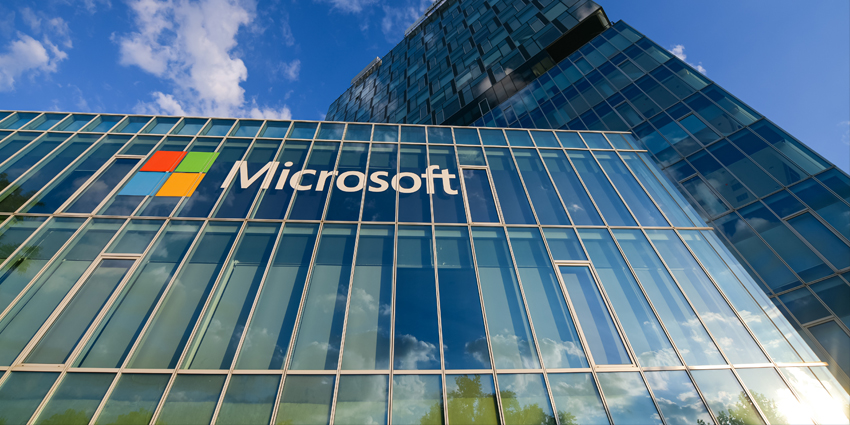Microsoft has spent the second half of 2023 championing what it calls an industry metaverse, an umbrella of multi-user XR services that will specifically address enterprise use cases such as collaboration, design processes, and employee training.
But the new year is upon us, as is Microsoft’s industrial Metaverse roadmap, with the first products launching this month. What will our vision be in an increasingly competitive market in 2024? Soon, the company will launch its first set of industrial metaverse applications and services, following a significant showcase at Ignite 2023.
Meanwhile, recent reports have emerged that Microsoft is shutting down key components of its XR portfolio, raising doubts among some experts.
Late last year, Microsoft announced that it was shutting down its Windows Mixed Reality platform and removing it from future versions of the regular Windows OS. This news comes after Microsoft has supported the service for years, giving PC headset users the option to leverage the platform to run AR/VR/MR applications.
Now, Windows appears to be discontinuing this service in favor of a more customizable adoption of SteamVR, the most widely used service for loading and streaming PCVR applications on a variety of headsets, namely the Quest 2.
The news also raises doubts about Hololens 2, which has left many XR enthusiasts pessimistic about the future of the device after two years of difficulties and controversies. Last year, Microsoft shut down its long-running Metaverse platform Altspace VR and moved some of its development team to its Mesh platform.
Will the loss of Windows Mixed Reality break the company’s XR products? I don’t think so. The company appears to be improving its XR offerings toward the launch of its industrial Metaverse platform, which will support its Mesh product, a 3D platform supporting VR/MR services in the future.
Learn more about Microsoft’s Industrial Metaverse today.
During Ignite 2023, Microsoft CEO Satya Nadella Talking about the relationship between AI and MR and how emerging technologies are impacting real-world enterprise use cases, the CEO said, “When you combine these two technologies (AI/MR), it’s pretty amazing and this technology has become a reality today. Siemens at Chevron It has been deployed in preview at Energy, and we are very excited to see how it performs, and we think it will go from strength to strength in the years to come.”
Microsoft has announced that it will launch new avatars for its Teams application in January 2024. Microsoft is introducing a suite of no-code tools and integrated Unity features that power the avatar system, allowing enterprise customers to create immersive spaces such as employee events and training. We offer tours and product showcases that can be customized to fit your business needs.
XR project managers can choose from a variety of pre-built immersive environments available on the Mesh platform and use code-free Unity tools to personalize spaces for their entire organization. As the general availability release approaches in January 2024, Microsoft will reveal more information about the Mesh for enterprise service, including additional features such as speaker enhancements, attendee engagement options, and interactivity.
Microsoft has also updated the Dynamics 365 platform by integrating advanced technologies such as AI, MR, IoT, etc. to provide users with new Metaverse features that provide augmented reality services rather than completely innovative services.
Additionally, frontline employees using Hololens and Dynamics 365 can now communicate with Copilot through Microsoft Teams to access work order information. Additionally, Dynamics 365 Field Service customers now have free access to Dynamics 365 Guides and Dynamics 365 Remote Assistance.
Additionally, after years of waiting, Microsoft introduced some Office applications to Quest last month, marking a significant partnership between the two companies to deliver competitive spatial computing productivity solutions.
Microsoft’s industrial metaverse, a difficult journey
In June 2022, the CEO resigned following reports of unethical behavior within the Microsoft Hololens team. Alex Kipman, former head of Hololens and MR; attache This moved Hololens project management and development to Microsoft’s Windows & Devices division, and several Hololens engineers moved to Meta.
Microsoft MR Vice President Scott Evans, confirming that the company is still developing immersive services following the revamp, while also revealing that a new version of Hololens is in development, which will be released when the technology is ready. But time is passing. It’s been quite some time now.
Microsoft has said it will only release new headsets if they offer significant performance improvements over previous models, emphasizing that customers don’t want successors with only minor improvements.
To ensure the success of the next generation of devices, Microsoft is currently reviewing the specifications and challenges facing clients that Hololens 3 can address, including display, tracking, sensors, and battery life.
Next month marks the first time Microsoft has hinted at its Industrial Metaverse initiative as part of its AI Cloud Partner Program to drive growth and innovation toward enterprise-grade AI. As part of this program, Microsoft supports the development of industrial Metaverse solutions and related technologies.
Microsoft is investing in the industrial Metaverse, but it’s not just investing in XR. Microsoft continues to work on HoloLens 2 support for enterprise clients. With the OpenAI partnership, Microsoft appears to be keeping up with the new technological landscape to deliver innovative business solutions.

